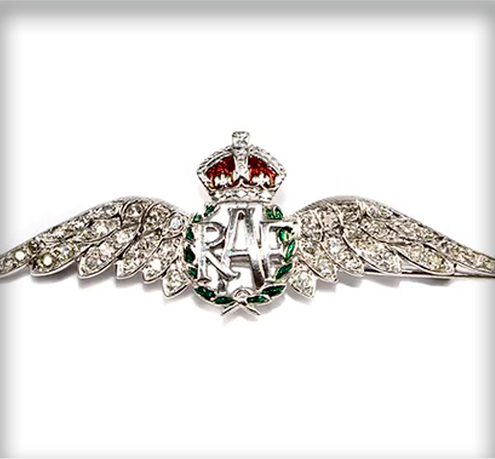Sweetheart Brooches

Sweetheart brooches were a sentimental jewelry item that became especially popular during World War I and World War II. These small decorative pins were often manufactured as tokens of affection that soldiers gave to their loved ones while they were away at war. Typically made from materials like brass, silver, or enamel, sweetheart brooches were produced in large quantities in factories across Britain, the United States, and other allied nations. The designs were deeply symbolic, often featuring military insignia, regimental badges, or patriotic motifs, reflecting the soldier's branch of service. While many were mass-produced, others were handmade by soldiers themselves using materials they had access to, adding a personal and emotional touch.
The manufacturing process for sweetheart brooches varied depending on the materials and methods used. In factories, skilled workers would cast the brooches in molds, soldering components together, and applying finishes like enameling or gold plating. The designs were often intricate, with detailed engravings or hand-painted elements that emphasized loyalty, love, and patriotism. Although some sweetheart brooches were made from high-quality metals, many were created from more affordable materials like brass or base metals due to wartime resource shortages. Once completed, the brooches were often polished, packed, and sold in shops near military bases or sent directly to soldiers who would mail them back home.
The widespread appeal of sweetheart brooches stemmed from their ability to convey emotional connection during times of separation and uncertainty. Worn by wives, girlfriends, mothers, and sisters, these brooches were a constant reminder of the men who were fighting overseas. The manufacturers recognized this sentimental value and marketed the brooches accordingly, appealing to both the sense of duty and romance. After the wars, these brooches became cherished keepsakes, passed down through generations, and today, they are collected not only for their historical significance but also for their delicate craftsmanship and the stories they carry.
